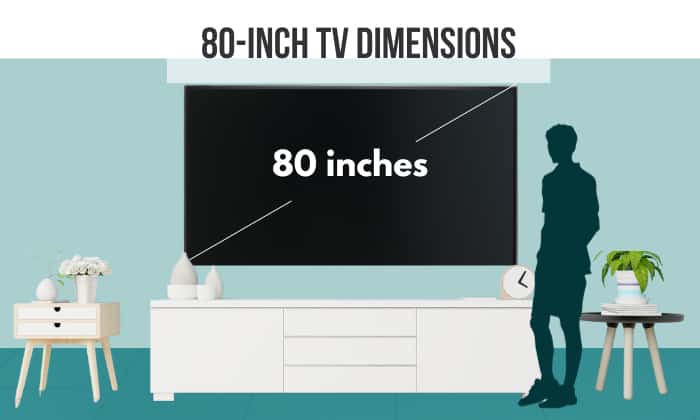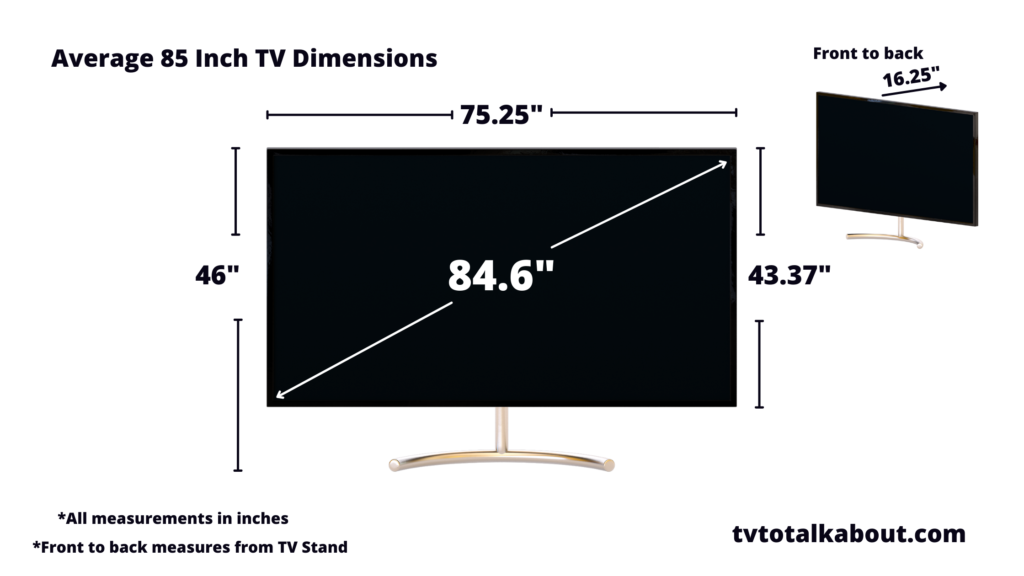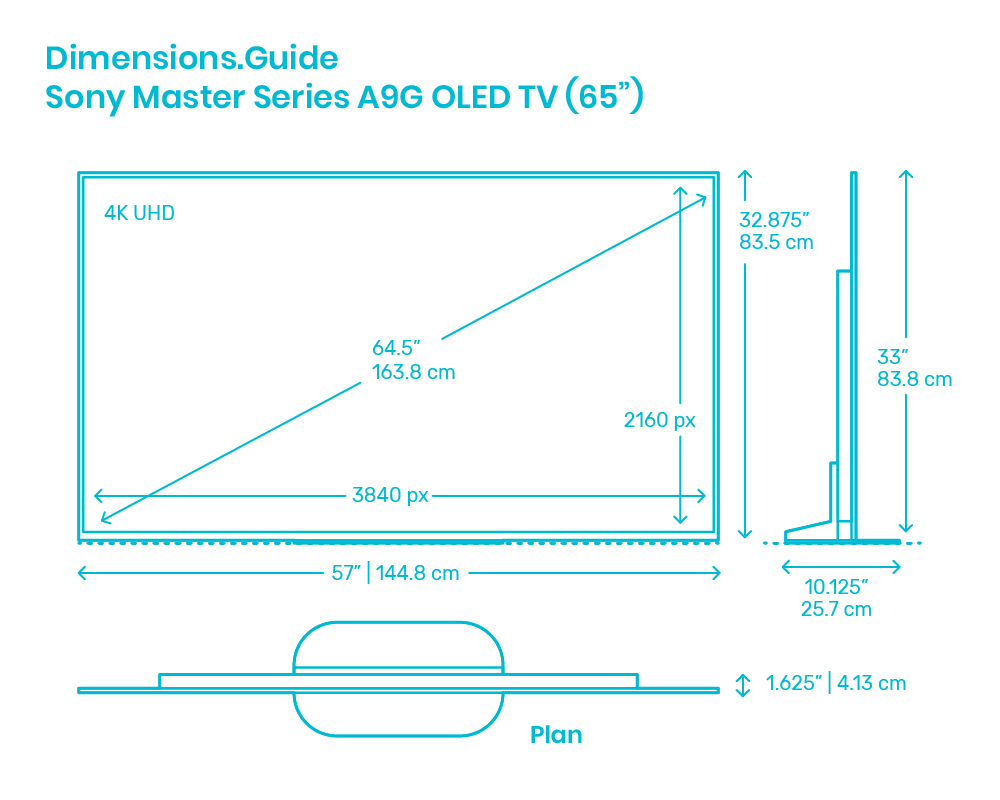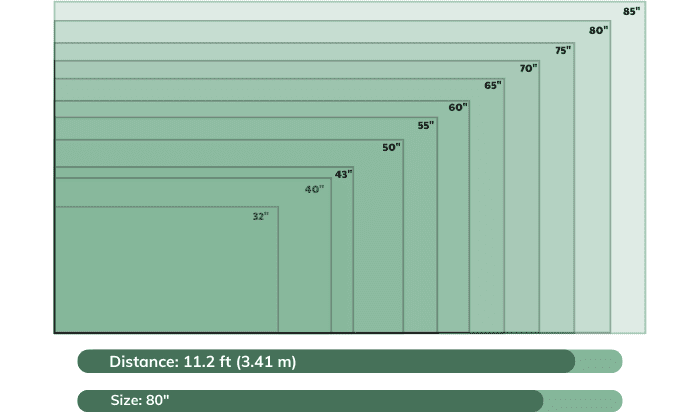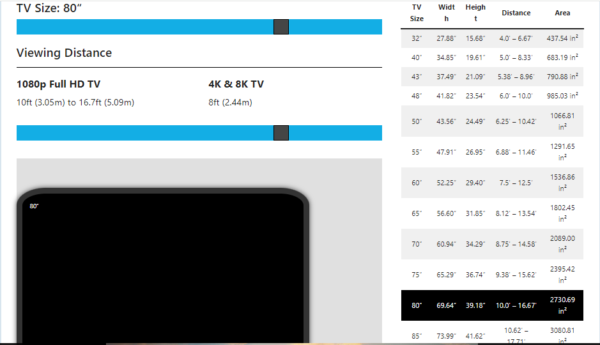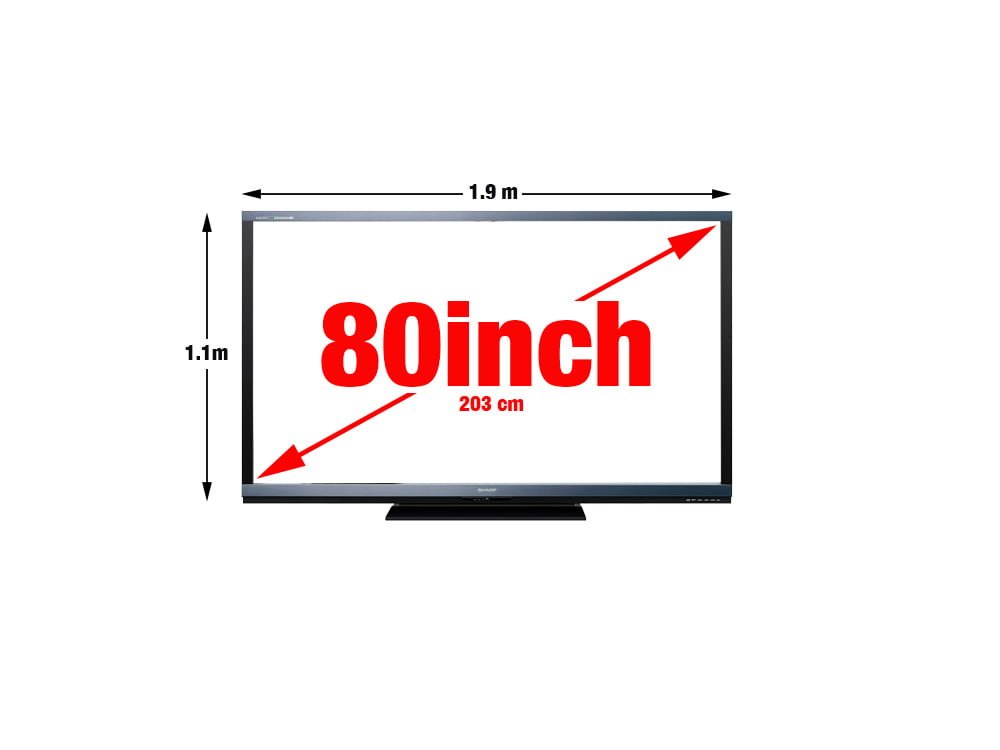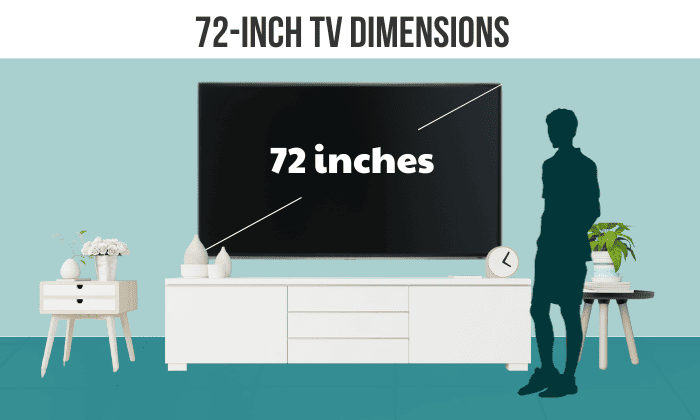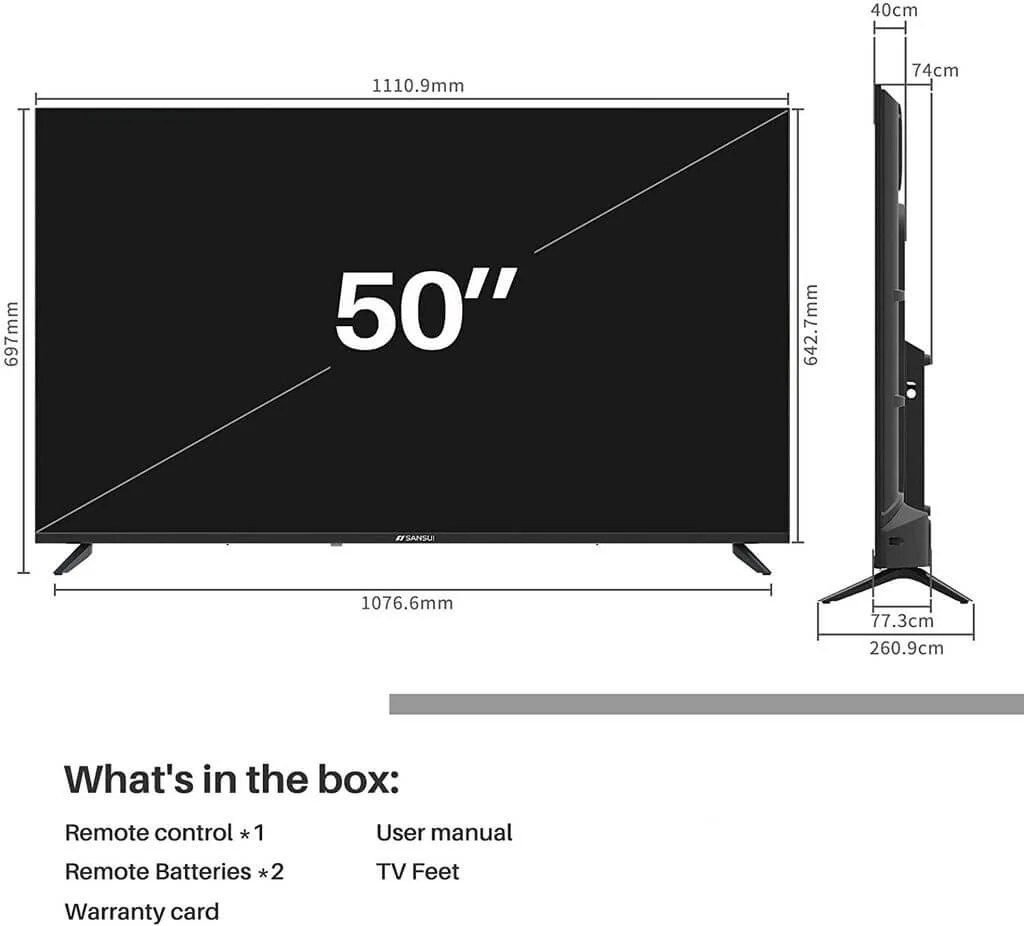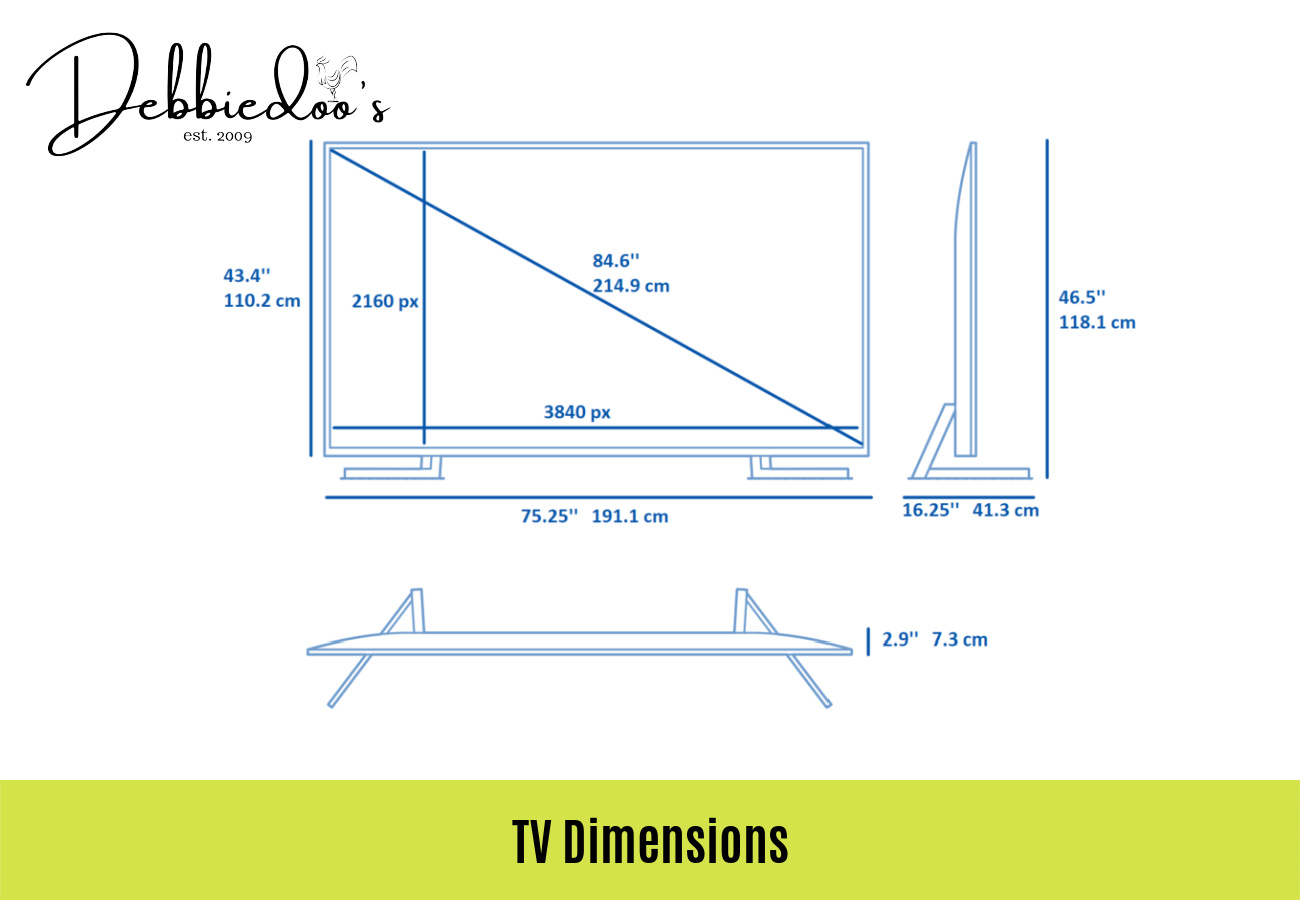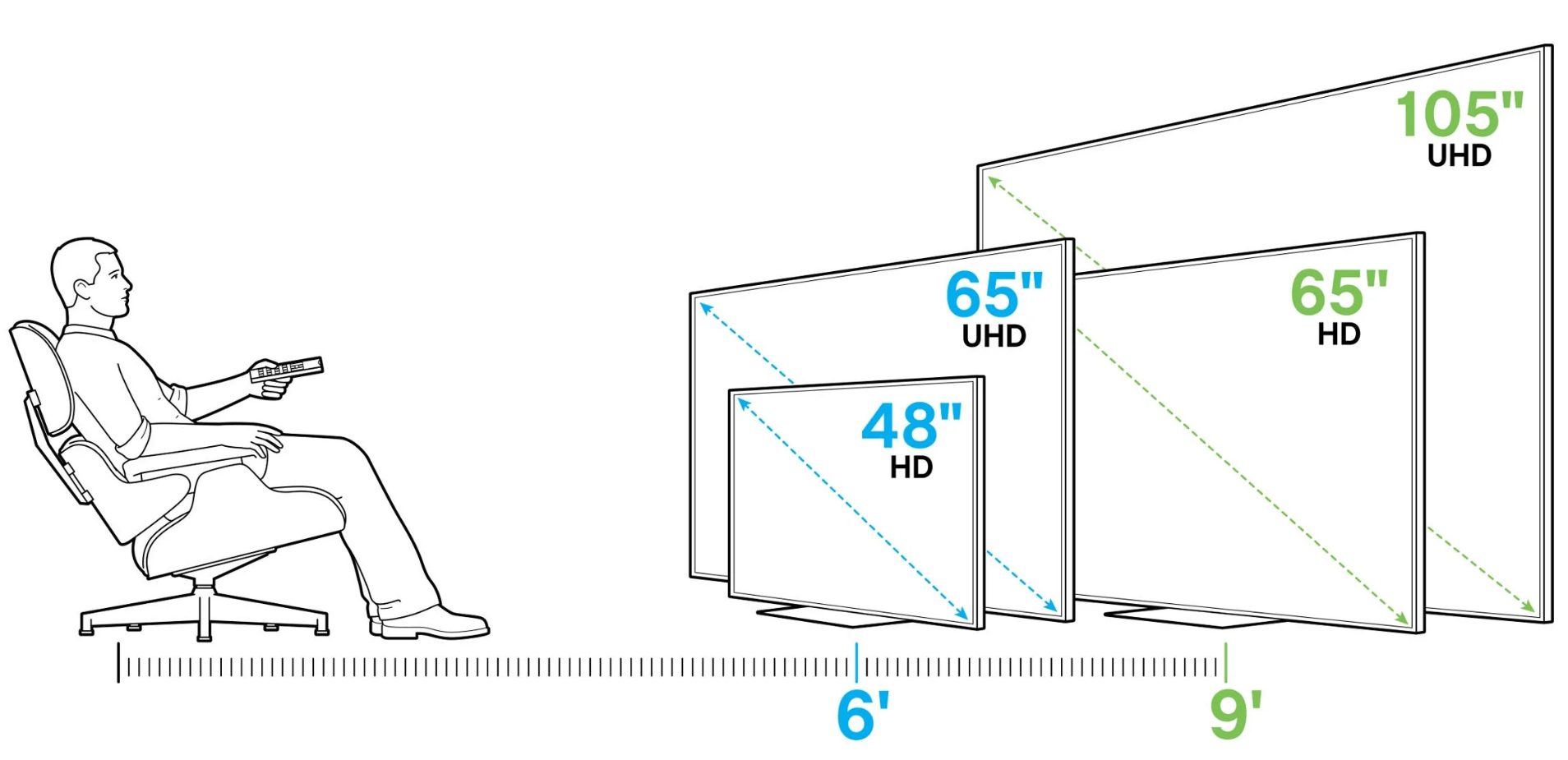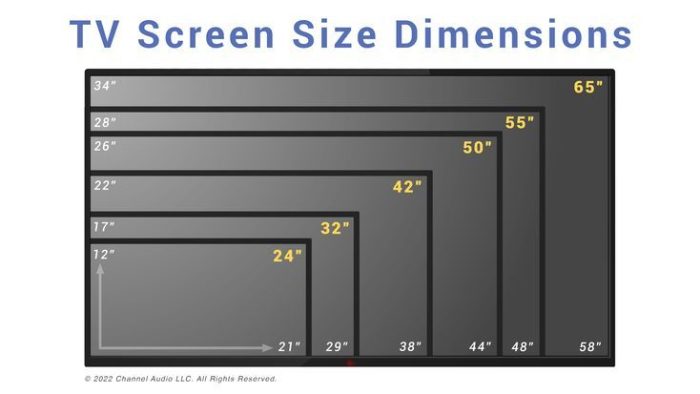What Are The Dimensions Of An 80 Inch Tv

In an era dominated by immersive entertainment, the demand for larger television screens has surged. The 80-inch TV, a centerpiece for many home theaters, offers a captivating viewing experience. Understanding the precise dimensions of these behemoths is crucial for planning installations and ensuring a seamless integration into your living space.
This article delves into the specific dimensions of an 80-inch television, providing a comprehensive guide for consumers and professionals alike. It explores the standard measurements, factors influencing size variations, and practical considerations for installation. This information is essential for anyone contemplating the purchase of an 80-inch TV.
Standard Dimensions and Measurements
While advertised as "80-inch," this measurement refers to the diagonal screen size, not the overall width or height. The actual dimensions vary slightly depending on the manufacturer and the design of the bezel, the frame surrounding the screen.
Generally, an 80-inch television has a width of approximately 70 inches (178 cm) and a height of around 40 inches (102 cm). These are approximate figures, and consulting the manufacturer's specifications is always recommended for pinpoint accuracy.
The Significance of Bezel Size
The bezel significantly impacts the overall dimensions. A television with a thin bezel will have slightly smaller overall dimensions compared to one with a thicker bezel, even with the same 80-inch screen size.
Manufacturers are constantly striving to minimize bezel size to maximize the screen-to-body ratio, providing a more immersive viewing experience. When planning your installation, always consider the total width and height, accounting for the bezel.
Factors Influencing Size Variations
Beyond the bezel, other factors can influence the dimensions. These can include the television's internal components, speaker placement, and the design of the stand or mounting system.
For instance, some models incorporate built-in soundbars, which can extend the overall width or height. Curved screens can also introduce slight variations in perceived depth and overall footprint.
Practical Considerations for Installation
Before purchasing an 80-inch TV, careful consideration should be given to the available space and viewing distance. This ensures an optimal viewing experience and prevents potential installation headaches.
Most manufacturers recommend a viewing distance of at least 8 feet for an 80-inch screen. This helps to avoid eye strain and allows viewers to take in the entire image comfortably.
Wall Mounting vs. Stand Placement
The choice between wall mounting and stand placement also influences the perceived dimensions and space requirements. Wall mounting can save floor space and create a cleaner aesthetic, but requires professional installation.
Stand placement, on the other hand, is simpler but requires a sufficiently wide and stable surface. Ensure the stand's width exceeds the television's width for stability and safety.
Measuring Your Space
Accurate measurements are paramount before making a purchase. Use a measuring tape to determine the width and height of the available space, taking into account any obstructions such as furniture or doorways.
Also, consider the placement of power outlets and cable connections to ensure they are easily accessible after installation. Planning ahead can save time and effort during the installation process.
The Future of TV Dimensions
As technology advances, we can expect further innovations in television design and dimensions. The trend towards thinner bezels and more compact internal components is likely to continue.
Emerging technologies like microLED and QD-OLED may also enable even larger screens with improved picture quality and energy efficiency. This will redefine the home entertainment landscape.
Ultimately, the dimensions of an 80-inch TV are a crucial factor in ensuring a seamless and enjoyable viewing experience. By understanding the standard measurements, considering the influencing factors, and planning the installation carefully, consumers can make informed decisions and create the perfect home theater setup. Always refer to the manufacturer's specifications for the most accurate and up-to-date information before making a purchase.


